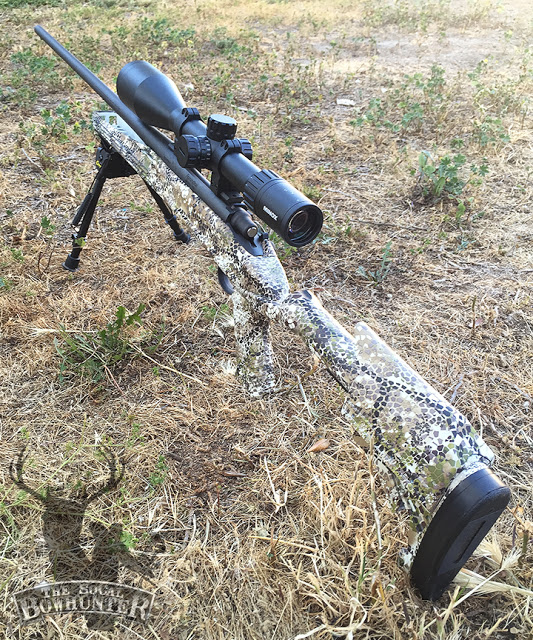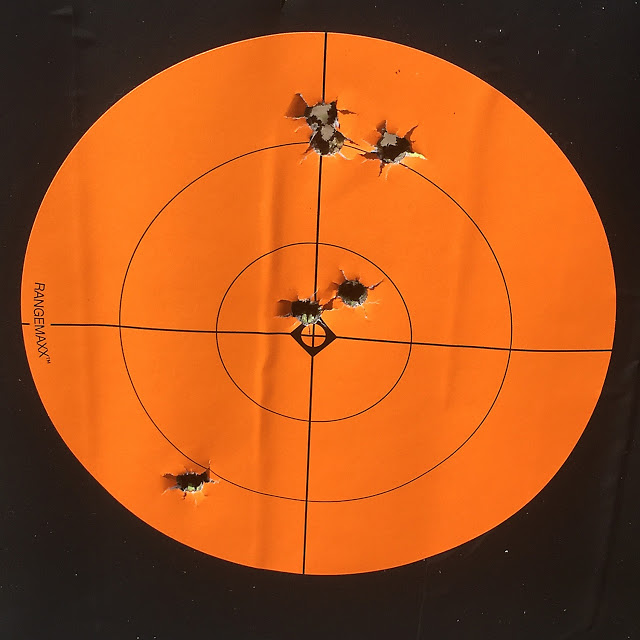| Notice I have many marked pages. That’s a good sign! |
There is quite a feeling of accomplishment when you get your rifle set up properly and make a shot at long range. It takes some knowledge, some skill, and proper technique. For the past couple months, I have been reading the ‘Long Range Shooting Handbook: A beginner’s Guide to Precision Rifle Shooting’ by Ryan Cleckner. Ryan was an OK shot in the military (Army Ranger sniper) and has a little experience around a precision rifle (firearms instructor) and is also an attorney (specializing in firearm law). He’s also a family man and loves a good scotch. You get my point, the man has skills and takes great care in what he does. For those of you that know me well understand that I have been shooting firearms just as long as I have been a bow. That certainly doesn’t mean I know everything, in fact it proved quite the opposite. I learn something new every day and this book offered much!
 |
| My Remington 700 SPS in .300 WM that I am using while reading the book. |
Earlier this year, I began working on a rifle build for long range shooting, to prepare for a possible sheep hunt. I had done plenty of research and chose a Remington 700 SPS chambered in .300 WM as my base weapon. While I love the rifle, if I had spent more time considering my options, I may have gone with a .308 due to available ammunition for hunting in California. Even still, I love my .300 WM. After I got things put together and began sighting it in, I found this book. Yes, it is a beginner’s guide, but it is full of great information. While I knew much at the beginning of the nook, I didn’t skip anything. I wanted to find out where Ryan was coming from and learn as much as I could. I really like the writing style as it’s genuine, to the point, and not a holier-than-thou manifest. He covers safety, the rifle parts, elevation, wind, and so on. It was great!
Part of reading the book that I found great was my choice of stock vs. what Ryan recommends. He dislikes the pistol-grip handle for a precision rifle, which is, of course, what I chose. Ha! It was great to read WHY he disliked it and it made perfect sense. For me, my wrist has given me problems over the years and I wanted to use something a bit more comfortable. When I first began shooting it, I was all over. It just so happened that when I followed Ryan’s advice while using the pistol-grip I was dead on. 306 yard shot on a 12” target felt pretty damn good. I improved even more after reading more and learning to watch some of the things I wasn’t doing quite right. There is some sage advice and guidance, you just have to pace yourself and I recommend taking notes.
 |
| The top three shots were applying Ryan’s techniques at 100 yards. |
A second feature of note was the use or non-use of a bipod. In my mind I needed one and couldn’t hunt without it. The practical application of using one in the field for hunting wasn’t feasible, but I couldn’t come to grips with leaving it off. WHat can I say, I am a gearhead and I love technical stuff. Once I read what Ryan had to say and why it wasn’t a good idea, I removed it to test the theory. It turns out, once again, that he knows what he is talking about. He was spot on and if you look at the image above, this was the result of using my pack as a rest vs. a bipod. (Anyone want to buy a bipod?)
Now, some of you will say that much of what is in here you already know. That is probably true, but if you take the time to read it, let it sink in (knowing it or not) and applying the techniques, you will improve. Admittedly, some parts went slow for me, but I kept an open mind, as I recommend you do, too.
The book retails for $24.95, but it’s on Amazon for $14.95, or you can purchase it directly from the LRSH website. I highly recommend buying one and reading it. 25% of the book’s proceeds will be donated to two military charities: the Special Operation Warrior Foundation and the Sua Sponte Foundation.
Ryan also has a podcast called Going Ballistic with Ryan Cleckner. I highly recommend tuning in if you want to learn more about long range shooting, but also some great firearm tips.
If you are looking to get into long range shooting or long range hunting, I would recommend reading this book prior. Read it cover-to-cover and you might be surprised what you learn. Take it from a guy who has been shooting for 30 years and learned quite a few things from the book. You can find the book on Amazon. If you do read the book, stop back and let me know what you thought. Let Ryan know, too!
Just ordered Long Range Shooters Handbook.
Hope it’s as good as reviews!
Hi Brad! I truly enjoyed learning more and it was easy to follow. Let me know what you think!